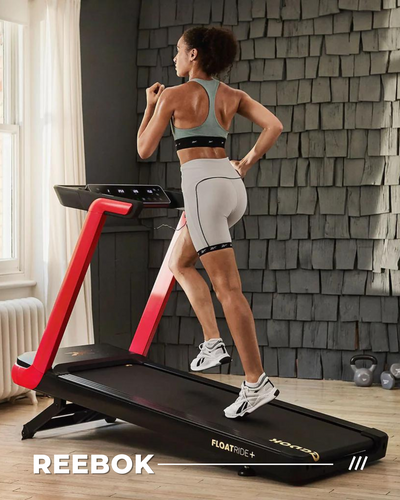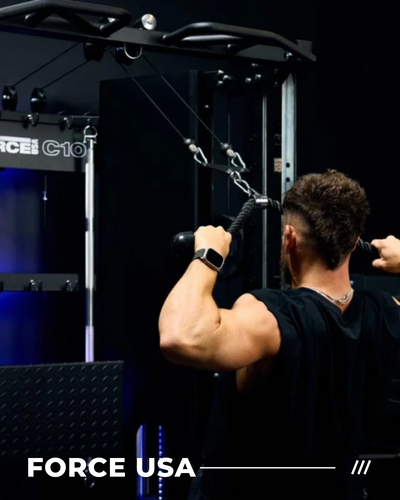How Pilates Supports Recovery From Common Injuries
GYMSPORTZ PTE LTD | 30 July 2025

Pilates is often associated with core strength and graceful movement, but its true value shines in injury rehabilitation. Developed by Joseph Pilates in the early 20th century, this form of exercise focuses on controlled movement, alignment, and breath work—key components that contribute to healing and preventing future injuries. Whether you're dealing with back pain, joint strain, common home injuries, or a sports-related injury, Pilates offers a gentle yet highly effective path to recovery.
Understanding the principles that make pilates effective for rehabilitation
What makes Pilates stand out as a rehabilitation method is its focus on the body as an integrated system. Movements are low-impact and controlled, allowing individuals to recondition their bodies without putting stress on injured areas. Core stability, proper posture, and muscle balance are emphasised throughout each session, which makes Pilates suitable for people recovering from everything from minor sprains to more complex musculoskeletal issues.
Unlike high-impact exercises that may risk re-injury, Pilates builds strength gradually and in alignment with your natural movement patterns. This progressive, mindful approach can complement physical therapy or act as a transition into more demanding forms of exercise.
Pilates for lower back pain and spinal alignment
Lower back pain is one of the most common complaints among both active individuals and office workers. Pilates addresses this by strengthening the deep abdominal muscles and the multifidus, which stabilise the spine. When these muscles are engaged correctly, they help support the lower back, relieve tension, and reduce pain.
Many traditional back exercises often overlook posture, but Pilates actively promotes spinal alignment and awareness. Over time, individuals learn to carry themselves with more control, leading to long-term improvements in posture and reduced strain on the lower back.
For those unable to perform weight-bearing exercises, using an exercise rowing machine in Singapore gyms can also support spinal mobility and strength when combined with a Pilates routine.
Joint stability and muscle balance for knee and hip injuries
Knee and hip injuries often stem from muscle imbalances and poor alignment. Pilates can help by targeting the gluteal muscles, hamstrings, and deep hip rotators, which play a crucial role in maintaining proper leg mechanics.
Pilates exercises are designed to be symmetrical and evenly work both sides of the body. This not only supports recovery but also prevents compensatory movement patterns that could lead to new injuries. Through repeated practice, individuals become more aware of how they move, where they hold tension, and how to correct faulty patterns.
Rebuilding shoulder mobility and rotator cuff strength
Shoulder injuries are notoriously stubborn and require a delicate balance of mobility and strength to heal properly. Pilates offers this through controlled, small-range movements that activate the stabilising muscles around the shoulder joint without placing unnecessary pressure.
For example, arm circles, scapular isolations, and resistance band work are commonly used in Pilates rehabilitation programmes. These movements help retrain the body to move the shoulders independently of the spine, improving coordination and reducing risk of aggravation.
Even those recovering from more intense shoulder issues, such as rotator cuff tears, can benefit from a modified Pilates regimen tailored to their stage of recovery.
The role of breathwork and nervous system regulation
One often-overlooked benefit of Pilates is its impact on the nervous system. Every exercise is performed with controlled breathing, which has a calming effect on the body and mind. This conscious breathwork can help reduce the emotional stress often associated with injury and recovery, such as anxiety or frustration.
Breath control also improves oxygen flow to healing tissues, supporting cellular repair. It reinforces movement precision and enhances core engagement, making each exercise more effective and efficient.
Gentle progression makes pilates suitable for all recovery stages
From acute injuries to post-surgical recovery, Pilates can be adapted to meet individuals at any point in their healing journey. Exercises can be performed lying down, seated, or even using props to reduce strain. As strength and confidence grow, the routine can be safely intensified.
This adaptability makes Pilates particularly useful for older adults or individuals managing chronic conditions. For those planning to ease back into a full fitness routine, combining Pilates with strength training or cardio using leasing gym equipment offers a comprehensive and flexible way to build overall wellness.
Conclusion: A smart, supportive addition to your recovery routine
Recovering from an injury doesn’t mean sidelining movement altogether. With its focus on stability, alignment, and controlled motion, Pilates provides a structured yet gentle approach to rehabilitation that supports the body’s natural healing process. Whether you're addressing pain, regaining strength, or rebuilding coordination, Pilates can complement your recovery and help prevent future setbacks.
If you're looking to build a home setup that supports your journey to recovery and strength, explore Gymsportz’s wide range of fitness solutions—from bodyweight tools to full studio equipment. Visit Gymsportz to find high-quality gear designed to meet your fitness needs at every stage.







